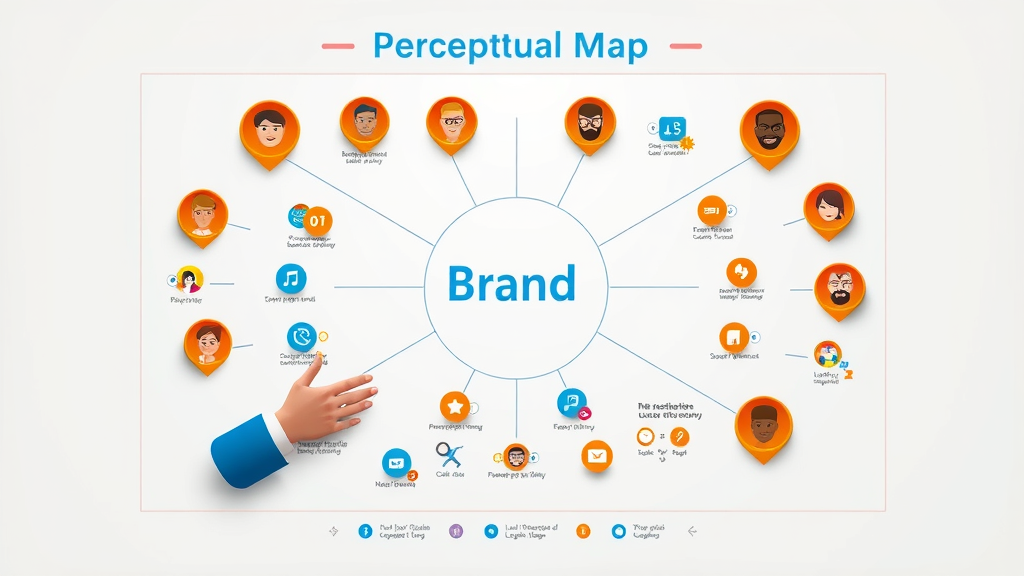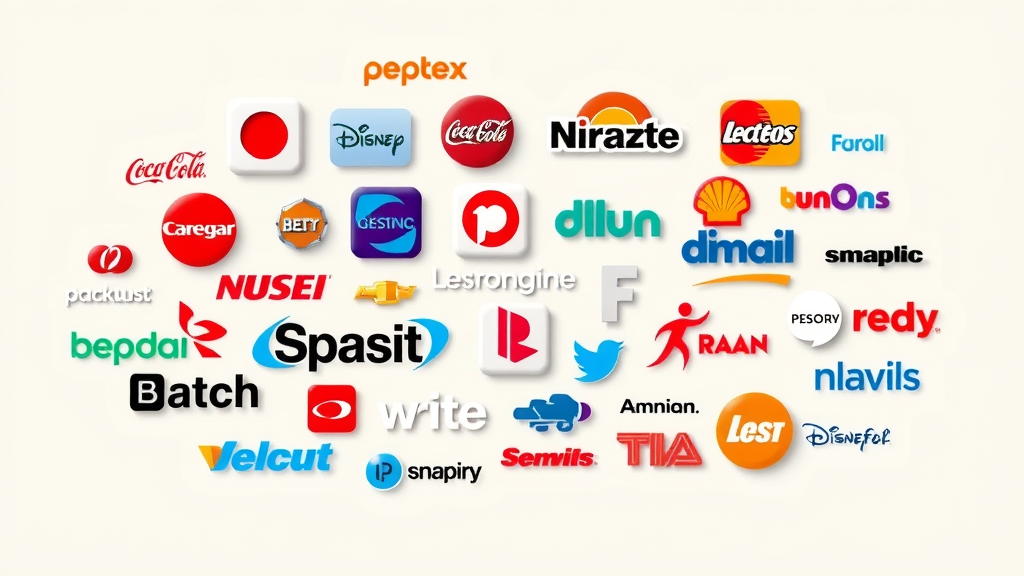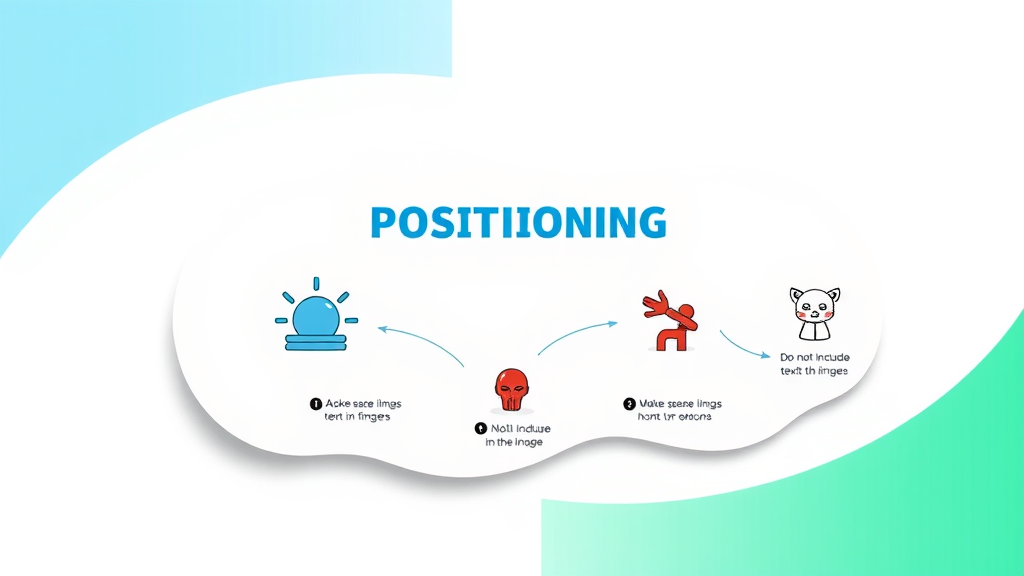Did you know that companies with a strong brand position are 88% more likely to enjoy higher customer loyalty? It’s true: how your brand is positioned in your market can be the difference between flying high or being forgotten. Brand positioning isn’t just a marketing buzzword—it’s the secret sauce behind the most successful brands. In this guide, you’ll learn why nailing down your brand’s unique spot in the minds of your target audience can unlock growth, fortify your reputation, and spark unshakeable loyalty. Whether you’re building a new venture or rebooting your brand strategy, these proven insights will show you what sets winning brands apart. Read on and discover why you’ll never want to do business the old way again!
Brand Positioning: The Startling Power Behind Successful Brands
Brand positioning serves as the backbone of every successful brand, quietly guiding marketing strategies, product development, and customer communications. From groundbreaking startups to iconic market leaders, the most memorable brands all share one thing in common: a clear, compelling brand position. This strategic anchor shapes how your brand is perceived, determines who will choose you, and differentiates your product or service in crowded markets. When you position your brand effectively, you create the foundation for customer loyalty, long-term growth, and a unique brand identity that competitors can’t replicate.
Consider what happens if you don’t prioritize brand positioning—your brand risks becoming just another face in the crowd, undermining even the most creative marketing efforts. Alternatively, a brand with a defined position becomes a magnet for the right target audience, attracts word-of-mouth referrals, and often commands a higher price point in the market. That’s why investing in your brand positioning strategy isn’t just smart, it’s essential. Let’s explore exactly what makes brand positioning so pivotal, and how you can harness its power to elevate your brand to new heights.

"Did you know that companies with a strong brand position are 88% more likely to enjoy higher customer loyalty?"
What You'll Learn About Brand Positioning
- What brand positioning means and why it matters
- How to craft a compelling brand positioning statement
- Key strategies for achieving a strong brand position
- Real-world examples of effective positioning statements
- Tools and frameworks such as perceptual mapping, brand persona development, and more

Defining Brand Positioning: What Is Brand Positioning?
At its heart, brand positioning is about staking claim to a distinct place in the minds—and hearts—of your preferred customers. It defines what your brand stands for, the unique value you offer, and how you differentiate your brand from the competition. Brand positioning shapes the perception of your products or services and directly influences every brand strategy decision, from messaging and design to pricing and partnerships. Ultimately, it answers the core question: “Why should a customer choose us instead of anyone else?”
A well-considered brand position is about more than just catchy slogans—it’s the sum of your brand promise, voice, and identity. By clarifying where your brand stands in the market, you align your internal teams and external customers around a unified vision. Brands with a powerful position foster trust, drive loyalty, and are best equipped to charge a premium or become the go-to affordable option, depending on their strategy. Understanding this foundation is essential before you can create a unique brand experience or build a stand-out positioning statement.
Brand Positioning vs. Brand Position: Understanding the Difference
While often used interchangeably, there’s a key distinction between brand positioning and a brand’s position. Brand positioning refers to the active, strategic process of defining and communicating your intended identity and unique value to your target market. Think of it as the map you draw to guide new and loyal customers into your ecosystem. In contrast, your brand position is the end result—it’s how your brand is actually perceived in the minds of consumers, after all your marketing, messaging, and brand-building efforts have taken effect.
In practice, a strong brand positioning strategy aims to close any gaps between your desired positioning and your actual brand position. That’s why brand marketers constantly monitor perceptions through feedback, surveys, and social listening. The more closely your lived brand position matches your intended brand positioning, the more effective and resilient your brand strategy will be. Getting this right means consistently outperforming competitors and creating a brand that customers trust and remember.
Brand Positioning Statement: Purpose and Benefits
A brand positioning statement is the north star for your brand—a concise, internal compass that articulates your unique value, target customer, and brand promise. Unlike taglines, which are designed for the public, the positioning statement is crafted for your team: it’s the go-to reference for all messaging, decision-making, and future-forward strategies. When properly written, it brings clarity, unity, and direction, fueling a consistent brand voice across every touchpoint.

The benefits of a strong positioning statement extend beyond alignment—it simplifies tough choices, highlights your unique brand identity, and prevents costly missteps or brand dilution. Teams guided by a clear positioning statement are empowered to innovate confidently, respond quickly to market shifts, and amplify a competitive advantage in every customer interaction. In other words, if your team doesn’t know exactly what your brand stands for, no one else will either!
Brand Strategy: How Positioning Fits in the Big Picture
Your brand positioning isn’t a standalone slogan or campaign; it’s the backbone of your entire brand strategy. A truly effective brand strategy uses your positioning as the launchpad for every decision, from which products or services to develop, to how to price them, advertise them, and serve your customers. When your brand positioning drives your strategy, you unlock authentic, lasting differentiation—because every touchpoint feels intentional and cohesive.
Brand positioning directly impacts your marketing strategy, brand persona, and your ability to adapt to changes in the market. It informs how you prioritize investments in innovation, determine key customer segments, and set the tone for your brand voice. With a clear brand position at its core, a brand strategy can change with confidence, knowing it’s always anchored to a powerful, relevant purpose. In short, smart positioning transforms brand strategy from guesswork into growth.
The Core Elements of a Strong Brand Position
Building a strong brand position isn’t about guesswork or trends; it’s about intentionally defining the foundational elements that make your brand both memorable and meaningful. From clearly defining your target market to identifying what only you can deliver, each element plays a critical role in carving out your unique space in the minds of your customers. Here’s how you can make sure every piece works in harmony.
These elements include your target audience, unique value proposition, brand promise, and the brand voice that colors every interaction. Together, these define not only what your brand offers, but also how it feels and why customers should believe in you. By strengthening these pillars, you’ll be ready to develop a brand position that ensures competitive advantage and lasting consumer loyalty.
Target Audience: Identifying the Right Market
Your target audience is the compass for every branding decision you’ll make. Defining your ideal customer means looking beyond demographics to truly understand values, needs, and behaviors. What motivates them to buy? What challenges do they face? By mapping these characteristics, you ensure your brand position speaks directly to those most likely to become loyal advocates.

The more precisely you profile your target market, the easier it becomes to develop messaging, product or service innovations, and experiences that feel tailor-made. Remember, trying to appeal to everyone often results in connecting with no one. Brands that focus on their best-fit audience consistently achieve higher engagement and stronger brand loyalty—key signals of successful brand positioning.
Unique Value Proposition and Brand Promise
A powerful unique value proposition (UVP) is the centerpiece of your positioning. It concisely explains how your products and services solve problems in a way no competitor can match. The closely related brand promise is an emotional commitment to deliver that value every single time. Your UVP and promise should be distinct, memorable, and—most importantly—believable in the eyes of your target customer.
The key is specificity. Are you the premium choice that justifies a higher price, or the affordable option for value seekers? Does your service always delight with above-and-beyond customer service, or do you shine through innovation or reliability? When these elements are crystallized, you have the tools to create a lasting and authentic brand stand that resonates on both a rational and emotional level.
Brand Voice, Persona, and Personality
Think of your brand voice as the personality that comes through in every message, social media post, and customer interaction. Is your brand playful, authoritative, inspiring, or empathetic? Alongside your voice, your brand persona shapes how people emotionally connect with your brand’s identity. Together, these factors form the personality that brings your brand promise and position to life.
Consistency in brand voice and persona builds trust, making every touchpoint across products and services feel familiar and genuine. Whether you are bold and visionary (like Apple), or warm and friendly (like Airbnb), your brand’s personality should mirror both your unique brand values and your audience’s desires. This connection is at the heart of building a based brand community, especially in today’s hyper-connected world.
For a deeper dive into the transformative impact of brand positioning and how it can serve as a true breakthrough for your business, you might find this exploration of brand positioning as a breakthrough strategy especially insightful. It offers additional perspectives on why positioning is often the missing link in unlocking brand growth.
Building a Brand Positioning Strategy
Developing a robust brand positioning strategy is how you translate insight and inspiration into tangible, market-winning results. The key is to continually align your approach with the shifting needs of your target customer while remaining true to your core values. By following proven models and best practices, you lay the groundwork for consistent growth, flexibility, and brand recognition.
Your positioning strategy should include both classic frameworks (like perceptual maps and positioning grids) as well as creative thinking around emotions, experience, and culture. This blend ensures you’re not just thinking about where your brand stands today, but also how you’ll adapt and lead in tomorrow’s marketplace. Here’s how to get started.
Developing Your Positioning Statement
Crafting a powerful positioning statement starts with clarity: Who is your brand for? What makes your offer unique? And why should anyone believe you? A typical brand positioning statement includes these building blocks:
- Target audience: Who you exist to serve
- Market definition: The category in which you compete
- Brand promise: The main benefit you deliver
- Proof points: The reasons to believe your promise
By establishing these pillars, your statement becomes the guiding light for everything from design to advertising to sales scripts. An effective brand positioning statement is short, memorable, and actionable—it grounds your strategy and unites the entire organization behind a shared mission.
Positioning Strategy Models: From Perceptual Maps to Emotional Triggers
Classic positioning strategy models like perceptual maps make it easy to visualize how your brand stacks up against competitors. By plotting key attributes on axes relevant to your audience (like quality vs. price or friendliness vs. expertise), you can spot both strengths and gaps in the market. This approach helps refine your message and uncover new opportunities for differentiation.

But don’t overlook the power of emotional triggers in today’s crowded markets. Effective positioning strategies also tap into customer aspirations, anxieties, and desires—building affinity that goes deeper than logic alone. By integrating both rational and emotional elements, your positioning strategy becomes the blueprint for long-term growth and true customer loyalty.
Positioning Strategies: Cost, Differentiation, and Focus
When it comes to positioning strategies, brands typically lean toward three main approaches: cost leadership, differentiation, or focus. Cost-based brands position themselves as the affordable option, often emphasizing efficiency or value for money. Differentiation leaders set themselves apart through innovation, higher quality, or an unparalleled customer experience. The focus strategy narrows the target to a specific niche or market segment—aiming to serve that group better than anyone else.
The secret to making these positioning strategies work is authenticity and execution. If you promise being the best value, make sure your product or service truly delivers. If differentiation is your game, continue innovating to stay ahead. The strongest brand position is one that’s realistic, customer-driven, and sustainable, rather than built on unproven claims or short-term gimmicks.
Aligning Brand Positioning with Brand Strategy
Your brand positioning strategy must seamlessly connect with your overall brand strategy. This alignment ensures that every part of your business—product development, marketing, customer service, and culture—supports a united vision. Without this connection, you risk sending mixed messages or confusing customers about what your brand really means.
Reviewing your brand’s mission and values regularly helps ensure that innovations, campaigns, and new offerings reinforce your chosen brand stand. By continually reinforcing your desired brand position, you build a more cohesive, reliable experience that deepens trust and amplifies brand equity over time.
Perceptual Maps: Visualizing Where Your Brand Stands
Perceptual mapping is an indispensable tool for understanding how your target market perceives your brand relative to others. By plotting key metrics like quality, value, or innovation, you gain a clear snapshot of where your brand stands—and can identify gaps in the market you’re perfectly positioned to fill. This tool is especially valuable in crowded markets where subtleties in perception can mean the difference between brand success and obscurity.
Armed with this data, you can optimize your branding initiatives and adjust messaging to strengthen your position, win new customer groups, or protect against aggressive competitors. In short, perceptual maps bridge the gap between raw data and high-impact strategy.
How to Create and Use Perceptual Maps
To build your own perceptual map, start by gathering insights through surveys, focus groups, or industry reports. Identify the two most relevant dimensions for your sector—like price versus quality or technical expertise versus customer service—and map existing brands, including your own, on the grid. The result? A clear picture of where brands cluster, and which positions are under- or over-served.

Use this analysis to make informed strategy decisions: Should you double down on your current strengths or address weaknesses to move toward a more desirable spot? Perceptual maps are especially useful for visual learners or when presenting your position to stakeholders who need to see—not just hear—your data-driven approach.
Case Study: Using Perceptual Maps for Brand Positioning
Take a look at how a challenger beverage company used perceptual mapping to refine its brand positioning. Initially perceived as just another soft drink, the team identified “health” and “flavor” as the most important attributes for its target audience. Research showed competitors owned the “tasty but unhealthy” and “healthy but bland” quadrants—leaving a valuable gap for a drink that was both nutritious and delicious.
By focusing messaging and innovation on delivering great taste without compromise, the brand repositioned itself successfully, grew market share, and attracted a loyal customer base. This is just one example of leveraging perceptual maps to uncover and fill critical gaps in the market for a winning branding strategy.
Crafting an Effective Brand Positioning Statement
No brand is complete without a clearly defined, actionable brand positioning statement. This vital tool turns abstract strategy into a living mission. Let’s break down exactly how to create yours and see how leaders in brand strategy put theirs into practice.
Positioning statements serve as decision-making tools for your team, ensuring everyone—from executives to social media managers—tells the same brand story. By benchmarking strong and generic statements, you give your brand greater clarity, confidence, and momentum.
Step-By-Step Process: The Anatomy of a Brand Positioning Statement
- Define your target audience: Start with precise demographics and psychographics of your ideal customer.
- Clarify the market you operate in: Establish the product or service category you compete within.
- State your unique value: Summarize what only your brand delivers (your unique value proposition).
- Express your brand promise: Make a clear, believable commitment customers can rely on.
- Support with proof: Offer tangible reasons (like innovations, awards, or stats) that back up your promise.
This structure helps prevent overgeneralizing, creates team alignment, and serves as a strong foundation for all external messaging.
Brand Positioning Statement Examples from Leading Brands
Learning from the best can jump-start your own positioning work. Here are a few iconic positioning statements (adapted for clarity):
- Apple: “For creative individuals who want the best user experience in digital devices, Apple leads by combining innovative design with reliable performance.”
- Airbnb: “For travelers seeking authentic, affordable stays, Airbnb provides a global network of unique homes and experiences—helping you belong anywhere.”
- Nike: “For athletes seeking performance and inspiration, Nike offers technology-driven gear and empowering messages—helping you push beyond limits.”

Note that these statements are internal mantras, not always public-facing slogans—yet they guide everything from campaign headlines to new product launches.
How to Test and Validate Your Brand Positioning Statement
Once your positioning statement is drafted, the next step is validation. Start by sharing it with key team members and trusted partners—does it resonate and inspire? Next, collect feedback from actual customers: Does the statement feel true, relevant, and exciting? Leverage surveys, focus groups, and even A/B testing in social media brand voice to gauge responses before rolling it out widely.
Finally, check against your perceptual map: Does your positioning statement align with the market reality, or is a competitor already firmly associated with those attributes? By continuously testing and refining, you ensure your statement achieves both internal buy-in and external impact, preventing future confusion or repositioning headaches.
| Generic Positioning Statement | Effective Positioning Statement |
|---|---|
| “We offer great products for everyone.” | “For busy parents, we provide healthy, time-saving meals delivered to your door—so you spend less time cooking and more time together.” |
| “We are leaders in customer service.” | “For small business owners who need tech support fast, our 24/7 hotline delivers expert help when you need it most—every time.” |
| “Affordable technology for all.” | “For college students on a budget, our laptops deliver top performance at a student-friendly price—no compromise required.” |

Brand Positioning in Action: Real-World Success Stories
- Apple: Innovation and Design Leadership
- Nike: Empowerment and Performance
- Airbnb: Belonging and Community
"Strong brand positioning is the linchpin between marketing messages and real consumer perception."
These global brands have mastered the art of positioning by staying relentlessly focused on their core value and evolving it as their industries—and their audiences—change. That’s how they’ve built durable brands that inspire loyalty and set the pace for others to follow.
Adapting Your Brand Positioning Over Time
The most effective brand positions aren’t carved in stone—they evolve. As markets shift, technologies advance, and customers’ expectations change, your brand positioning strategy must adapt too. This continual evolution ensures that your brand stands out and remains relevant year after year, rather than drifting into irrelevance or being outmaneuvered by faster, more adaptable competitors.
Regularly reviewing your positioning statement allows you to seize new competitive advantage opportunities and leverage fresh insights gained from the market. Innovation doesn’t mean losing sight of your roots—it means delivering your brand promise in ways that matter most right now to your target audience.
Market Shifts and Positioning Adjustments
Market disruptions—from new competitors to emerging technologies—are a fact of business life. The key to maintaining a successful brand is proactively spotting these shifts and having the agility to reposition when needed. Analyze changes in both consumer sentiment and the competitor landscape using analytics, perceptual maps, and direct feedback. Sometimes, even a subtle repositioning can open doors to new customer groups or revitalize aging products.
The brands that adapt and thrive are the ones that keep their eyes on the larger brand strategy while staying responsive to the market—not those that stubbornly cling to outdated positions. Embrace change by making small, calculated adjustments, ensuring your team and customers move forward with you.
Leverage Feedback from Social Media and Customer Service
Your customers often give you the clearest signals about your brand position—if you know how to listen. Monitor social media channels, track reviews, and gather feedback from customer service teams to spot early warning signs of misalignment or new opportunities. These tools provide authentic, real-time insight into the perceptions and expectations shaping your market presence.

Don’t just collect feedback—act on it. Adjust tone, messaging, or even products, based on what you hear. Brands who engage in this loop build trust, encourage participation, and differentiate your brand by showing you actually listen and respond.
Common Mistakes in Brand Positioning—and How to Avoid Them
- Overgeneralizing the brand position
- Failure to communicate positioning clearly
- Not aligning positioning with target audience needs
- Ignoring changes in the competitive landscape

Review your position regularly, keep your targeting sharp, and always ensure every campaign, touchpoint, and piece of collateral reinforces your unique brand promise. Avoiding these missteps keeps your positioning strong, your messaging clear, and your growth on track.
Brand Positioning Tools and Resources
- Perceptual mapping software
- Survey tools for audience insights
- Social listening platforms
- Online brand strategy frameworks
These resources bring data-driven clarity to your branding initiatives—helping you refine your positioning statement, measure results, and pivot when needed.
People Also Ask About Brand Positioning
What are the 3 C's of brand positioning?
The 3 C’s—Customer, Company, Competitors: How They Shape Brand Positioning
The “3 C’s” framework—Customer, Company, and Competitors—captures the essential context for strong brand positioning. Start with your customer: understand what they need, want, and value. Next, assess your company: What makes you unique, and how can you best deliver on your brand promise? Finally, study your competitors: Where are their strengths, and where are the gaps in the market you can fill? The sweet spot for your positioning is at the intersection of these three forces.
What are the 5 P's of positioning?
Understanding Product, Price, Place, Promotion, and Positioning in Brand Positioning
The “5 P’s”—Product, Price, Place, Promotion, and Positioning—represent the classic levers of any marketing strategy. In brand positioning, these elements must harmonize to reinforce your desired brand image:
- Product: What you offer and how it stands out
- Price: How your value is reflected in your pricing strategy
- Place: Where and how your brand is available to customers
- Promotion: How you communicate your brand’s story and unique value
- Positioning: The unique place your brand occupies in the customer’s mind

What is a brand positioning statement example?
Examples: Concise Positioning Statements from Notable Brands
Examples help clarify how companies express their identity and value:
- Volvo: “For safety-conscious families, Volvo provides reliable vehicles designed to protect what matters most.”
- Mailchimp: “For small businesses, Mailchimp’s platform makes email marketing effortless, creative, and effective.”
- Dove: “For women who know real beauty is more than skin-deep, Dove promotes self-confidence and honest care.”
What is brand positioning best defined as?
A Clear Definition and Its Importance for Building a Strong Brand
Brand positioning is best defined as the strategic process of establishing the unique space your brand stands for in your customers’ minds. It’s the combination of your value proposition, messaging, and identity elements that set you apart. A strong positioning gives clarity to brand strategy, authenticates every marketing initiative, and forms the foundation for long-lasting growth and loyalty.
FAQs About Brand Positioning
-
How do you position your brand in a competitive market?
Start with a clear understanding of your target audience and competitors using data and perceptual maps. Develop a positioning statement that addresses gaps in the market and highlights your unique strengths. Constantly communicate and reinforce this position through every marketing channel and product touchpoint. -
What is the relationship between brand persona and positioning?
Your brand persona and positioning work hand-in-hand; the persona gives personality and tone to your messaging, while positioning sets the strategic direction. Both must be deeply rooted in customer needs and aspirations for consistent, authentic impact. -
Why is a clear positioning statement essential?
A clear positioning statement ensures everyone in your company understands and communicates the same purpose and promise, avoiding confusion or dilution. It anchors your marketing, sales, and product strategies, providing focus and direction. -
What are some new trends in brand positioning strategy?
Brands are leveraging advanced data analytics, social listening, and empathetic storytelling to refine positioning. Hyper-niche targeting, influencer partnerships, and personalization are rapidly becoming core parts of modern positioning strategies, offering richer, deeper customer connections.
Key Takeaways for Effective Brand Positioning
- Strong brand positioning is foundational for brand growth
- Your positioning statement should be unique, clear, and customer-focused
- Review and refine your positioning as the market evolves
- Utilize perceptual maps and audience insight tools to guide decision-making

Conclusion: The Lasting Impact of Powerful Brand Positioning
"Brand positioning isn’t just a marketing exercise—it’s your business strategy in action."
Mastering brand positioning gives you the long-term strategic edge to build, grow, and protect your brand against any challenge.
For more information read The Ultimate Guide to Branding: Build, Grow, and Protect Your Brand.
If you’re ready to take your brand’s presence to the next level, consider exploring the broader landscape of corporate branding and how it can accelerate your business growth. Discover actionable secrets and forward-thinking strategies in this guide to corporate branding for 2025. You’ll gain advanced insights into building a cohesive brand identity, leveraging emerging trends, and positioning your business for rapid success in a competitive marketplace. Let your next step be the one that transforms your brand from memorable to truly magnetic.
 Add Row
Add Row  Add
Add 




Write A Comment